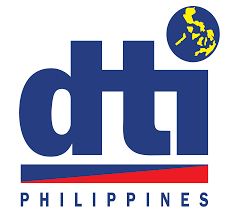
THE Department of Trade and Industry (DTI) vowed to support the creative industry—a sector seen generating high-value activities and job opportunities—in its bid to recover post-pandemic.
Trade Undersecretary Rafaelita M. Aldaba said at a recent event that DTI Competitiveness and Innovation Group has been implementing a program dedicated to shaping the creative sector.
The program aims to scale up creative talents, startups, entrepreneurs and businesses implementing new business models and information technology tools such as artificial intelligence.
“Our program provides support services, such as incubation and acceleration, mentorship, industry matching, along with internationalization activities to expose creative startups to ecosystems abroad,” Aldaba said.
“The pandemic has adversely affected the creative industry and through this program, which focuses on innovation and use of new technology, we hope to help the creative sector in their post-pandemic growth and recovery,” she added.
Aldaba said that the Trade department is working with the Philippine Statistics Authority in coming up with the Philippine Creative Industries Satellite Account to address the lack of official industry data.
Currently, she said there are about 745,000 workers in the formal creative sector, but there are millions more in the gig and informal economy.
“This [satellite account] will provide us with more comprehensive industry statistics that will serve as vital input for both government and industry,” Aldaba pointed out.
The trade official said that DTI is collaborating with the industry, other government agencies and the academe in crafting roadmaps for the creative industry.
In 2019, the Creative Economy Council of the Philippines submitted to the Trade department and Board of Investments the Creative Economy Roadmap, which sets five development sectors: advertising, film, animation, game development and design.
The roadmap aims to make the Philippines the top creative economy in the Asean region by 2030 in terms of size and value of creative industries, as well as competitiveness of talent and content.
The scope covers six cultural domains: cultural and natural heritage; performance and celebration; visual arts and artisan products; books and press; audio-visual, broadcast and interactive media; and creative services.
“The creative industries are at the crossroads of the art, culture, business and technology. All these activities are intended in creative fields and can generate income through trade and intellectual property rights,” Aldaba said.
“Leveraging on our cultural richness, highly skilled content artists and creators and their use of new technologies, we can transform the creative industries to thrive and fuel our economic recovery and growth,” she continued.
The United Nations Conference on Trade and Development (Unctad) designated 2021 as the “International Year of Creative Economy for Sustainable Development.” Earlier this year, Unctad urged to fast-track initiatives boosting recovery of the creative economy as the global community aims to reach the Sustainable Development Goals in 10 years.
